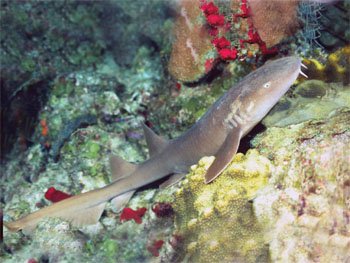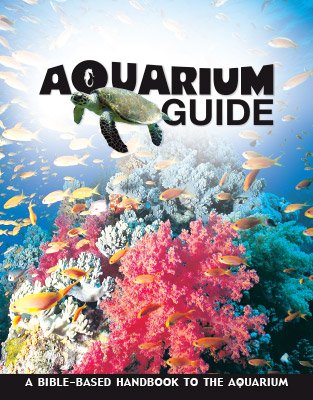Nurse Shark
Created on Day 5
on August 2, 2012Unlike most sharks, the nurse shark does not have to constantly move water across its gills to breathe.
Design

Unlike most sharks, the nurse shark does not have to constantly move water across its gills to breathe. The nurse shark can remain motionless on the seafloor because of its ability to pump water across its gills. It does this by opening and closing its mouth. This design was given to the nurse shark by its Creator.
Features
- This sluggish shark has a yellowish-brown to dark brown body that is relatively flat.
- Some have small dark spots or patches on their bodies.
- The most distinguishing feature of the nurse shark is the barbels that hang down from the shark’s jaw. Barbels are fleshy appendages that house the taste buds. They are used to search for food in murky water.
Fun Facts
- Its teeth are fan-shaped, which helps it crush crustaceans, which it eats.
- Nurse sharks will pile on top of one another on the seafloor when they are resting.
- The nurse shark does not migrate; it simply adapts by limiting its activity.
- Most sharks and rays have a unique ability to regulate incoming light levels. The constricted, light-adapted pupil takes the shape of an oblique slit in this species.
CLASS: Chondrichthyes (cartilaginous fish—sharks, skates, and rays)
ORDER: Orectolobiformes (carpet sharks)
FAMILY: Ginglymostomatidae (nurse sharks)
GENUS/SPECIES: Ginglymostoma cirratum
Size: Average 10 ft (3 m)
Diet: Shrimp, squid, fish, octopus, crabs, sea urchins, corals
Habitat: Shallow tropical and subtropical waters of the Western Atlantic, Eastern Atlantic, and Eastern Pacific Oceans
Aquarium Guide
With fun facts about more than 100 animals, this long-awaited Aquarium Guide includes beautiful pictures and reveals the incredible facts and design features that point to our amazing Creator. This handy size guide is excellent for school field trips and family trips to your favorite aquarium!
Browse Kids Book- © 2024 Answers in Genesis
- Privacy Policy
- Contact
- About

